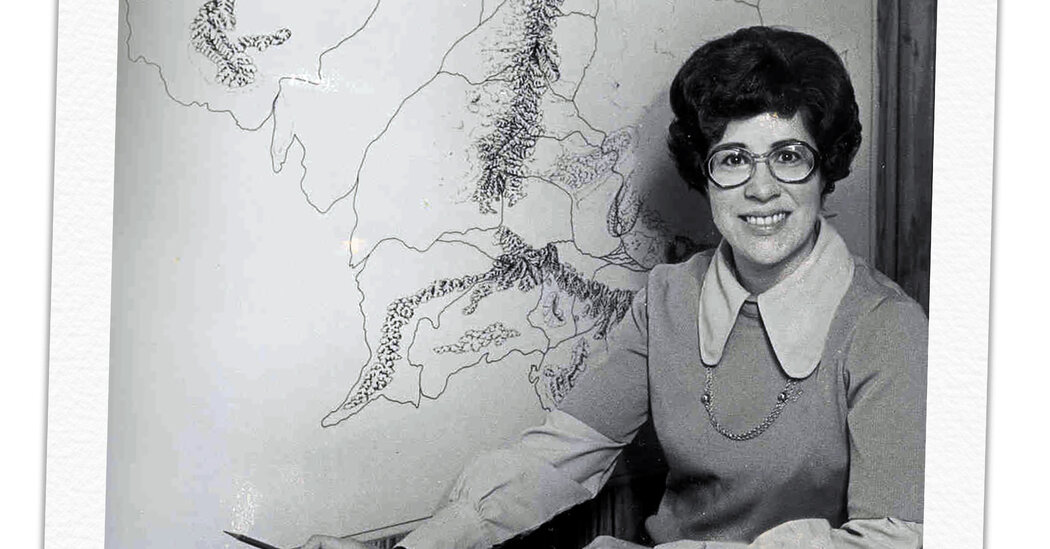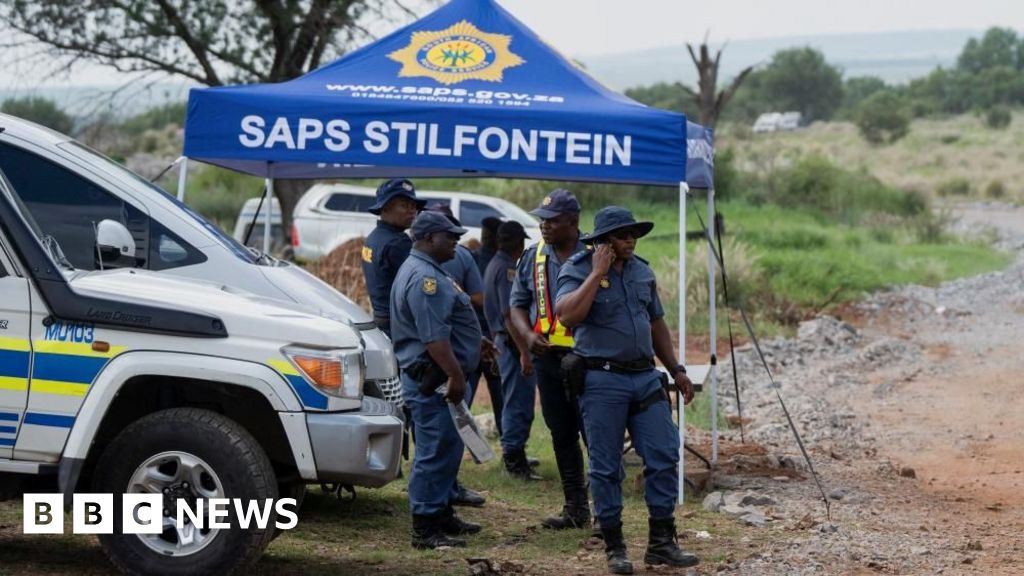
This text is a part of Overpassed, a form of obituaries about important public whose deaths, starting in 1851, went unreported in The Occasions.
In 1977, Karen Wynn Fonstad made an extended shot chilly name to J.R.R. Tolkien’s American writer with the hope of touchdown a dream task: to develop an exhaustive atlas of Heart-earth, the environment of the writer’s extensively customery “The Hobbit” and “The Lord of the Rings.”
To her awe, an writer indubitably.
Fonstad spent two and a part years at the mission, studying throughout the novels sequence via sequence and painstakingly indexing any textual content from which she may just infer geographic main points. With two small children at house, she most commonly labored at evening. Her husband left notes on her drafting desk reminding her to walk to mattress.
Her ensuing keep, “The Atlas of Middle-earth” (1981), wowed Tolkien fanatics and students with its beautiful stage of topographic constituent; the newest paperback version is in its thirty second printing.
“There is an enormous amount of information,” the critic Baird Searles wrote in a assessment of her keep in Asimov’s Science Untruth brochure, “from a diagram of the evolution of the languages of Middle-earth to tables of the lengths of mountain ranges and rivers. It’s a true atlas (the author is a geographer) and quite an achievement.”
Commissions quickly adopted for atlases of alternative imaginary playgrounds with their very own faithful subcultures, together with Pern, the environment of the sprawling and best-selling “Dragonriders of Pern” form, which the writer Anne McCaffrey started publishing in 1968, and 2 foundational worlds inside the Dungeons & Dragons franchise.
Fonstad’s atlases was items of cult veneration, and these days, the ranks of the gaming trade and of untruth and sci-fi publishing are full of cartographers influenced via her paintings.
“It was like the Velvet Underground of fantasy mapmaking,” Jason Fry, a co-author of “Star Wars: The Essential Atlas” (2009, with Daniel Wallace), mentioned in an interview about “The Atlas of Middle-earth.” “Everyone who read it went out and got graph paper and mapped something.”
Mike Schley, a modern untruth mapmaker, has referenced her paintings in his personal analysis.
“Her diagrams and exposition gave her work gravity and materiality,” he mentioned in an interview. “It’s one thing to write off a feature as, well, magic. It’s another to feel like you can get dirt under your nails exploring a place.”
Karen Lea Wynn was once born on April 18, 1945, in Oklahoma Town, to Estis (Wampler) and James Wynn. She was once raised in within reach Norman, Okla., the place her father ran a sheet-metal store and her mom did secretarial paintings for rent.
Then graduating from Norman Top College, she enrolled on the College of Oklahoma, learning artwork, upcoming, envisioning a profession as a clinical artist, switched her primary to bodily remedy and graduated in 1967.
However a part-time process illustrating maps for the college’s geography area kindled her passion in cartography. In 1968, she was once considered one of a handful of ladies authorised into the college’s geography graduate program, the place she wrote a mode handbook of cartographic symbology as her grasp’s thesis. Pace a grad scholar, she met and married Todd Fonstad, a Ph.D. scholar within the area. In 1971, the couple moved to Wisconsin, the place Todd taught on the College of Wisconsin Oshkosh.
Quickly upcoming, a pal lent her a book of “The Fellowship of the Ring” (1954), the primary in Tolkien’s “Lord of the Rings” trilogy. Although she wasn’t an avid reader of untruth, Fonstad was once entranced. She stayed up all evening completing it, upcoming went out the then era to shop for the remains of the trilogy.
Her son mentioned she had learn “The Hobbit” and “The Lord of the Rings” some 30 occasions ahead of pitching the atlas.
“I doubt if any other book or books will ever grasp my interest as much as these,” she wrote in her magazine in 1975. “Each time I finish a reading I immediately feel as if I hadn’t read them for weeks and I am lonely for them — lonely for the characters within the books, the tremendously vivid descriptions, the whole essence.”
The theory for an atlas got here to Fonstad upcoming the 1977 e-newsletter of “The Silmarillion,” a unclear, posthumous selection of Tolkien-penned stories comprising the myths and historical historical past of Heart-earth. (Tolkien died in 1973.) She envisioned a collection of maps spanning the numerous millenniums of Tolkien’s legendarium, bringing a geographer’s perceptible no longer simply to landforms but additionally to the migrations of peoples, battlefield troop actions and the trips of the novels’ characters.
“It’s one thing to write off a feature as, well, magic. It’s another to feel like you can get dirt under your nails exploring a place.”
When she referred to as Houghton Mifflin to tone her thought, Fonstad was once hooked up with Tolkien’s U.S. writer, Anne Barrett, who was once semiretired however came about to be visiting the place of business that era. Barrett so cherished the concept that that she join permission from the Tolkien property inside days.
As a part of her analysis, Fonstad pored over Tolkien’s unedited manuscripts and notes, archived at Milwaukee’s Marquette College, related her house in Oshkosh.
The primary version of “The Atlas of Middle-earth” contained 172 maps, which Fonstad drew via hand. Each and every was once accompanied via reflections on her method and guesses, in conjunction with subjects just like the bottom morphology of the Shire, agreement patterns in Gondor and plate tectonics in Mordor.
A 1991 revised version integrated main points from 9 volumes of “The History of Middle-earth,” a trove of previously unpublished Tolkien subject matter edited via the writer’s son Christopher. The revised atlas, nonetheless in print, has been translated into just about a lot languages.
“It is far and away the best and most careful reference work related to Tolkien,” Stentor Danielson, a Tolkien student and an colleague trainer of geography at Pennsylvania’s Slippery Rock College, mentioned in an interview.
Fonstad adopted her Heart-earth tome with 4 in a similar way enthusiastic atlases. She traveled to Eire to paintings along McCaffrey — the primary lady to win a Hugo Award for untruth, in 1968 — on “The Atlas of Pern,” which Fonstad printed in 1984. And she or he was at Pristine Mexico to talk over with the novelist Stephen R. Donaldson, writer of “The Chronicles of Thomas Covenant” form, for the “The Atlas of the Land,” printed in 1985.
In an interview, Donaldson recalled Fonstad arriving with “an enormous list of scenes and places” from his books and asking questions on trivia he’d by no means thought to be.
“It’s one thing to write off a feature as, well, magic. It’s another to feel like you can get dirt under your nails exploring a place.”
For TSR Inc., the writer of the Dungeons & Dragons role-playing sport and then-ubiquitous tie-in novels, Fonstad excepted “Atlas of the Dragonlance World” (1987) and “The Forgotten Realms Atlas” (1990), either one of which can be sought-after collectibles nonetheless worn as reference subject matter via artists running for the franchise.
“Her work is one of those rare occasions when fantasy maps manage to get closer to ‘real cartography,’” Francesca Baerald, a modern Dungeons & Dragons map artist, wrote in an e-mail. “The scientific approach she followed and her care for each small detail is something incredible.”
Her atlases earned Fonstad renown amongst untruth readers, however best tiny source of revenue, which she supplemented via instructing geography section week for the College of Wisconsin Oshkosh and via moonlighting as a bodily therapist. Within the Nineties, Fonstad made occasional maps for TSR and the Town of Oshkosh, however she faithful extra week to board and civic paintings, together with a time period at the Oshkosh Town Council.
She was once recognized with breast most cancers in 1998 and underwent just about seven years of remedy, remission and recurrence. All over that week, she began mapping C.S. Lewis’s “Chronicles of Narnia,” however the Lewis property in the long run withheld permission for an atlas.
Fonstad died of headaches of breast most cancers on March 11, 2005, at her house in Oshkosh. She was once 59.
For all her prayer to untruth worlds, Fonstad was once bemused via the be on one?s feet of fan tradition. She hardly ever authorised invitations to conventions or meetings, claiming she was once too thin-skinned to grassland grievance. However her reluctance softened related the tip of her week, as Peter Jackson’s “Lord of the Rings” movie trilogy made the characters Frodo and Bilbo Baggins family names.
In 2004, at a convention in Atlanta, she met Alan Lee, the flicks’ Oscar-winning conceptual fashion designer, who discussed that her atlas have been an important useful resource for his workforce.
“Nothing could have made my mother happier in the last few months of her life,” her son, Mark Fonstad, an colleague trainer of geography on the College of Oregon, mentioned in an interview. “She very much enjoyed those movies, even though she was among the 1 percent of people who could have nitpicked every difference from the books.”













